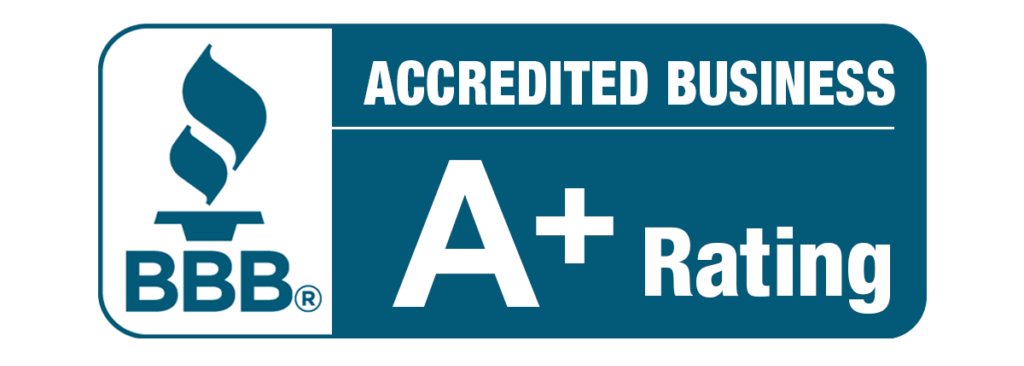Asphalt Roofing in Vancouver
Vancouver’s Trusted Choice for Asphalt Roofing Solutions

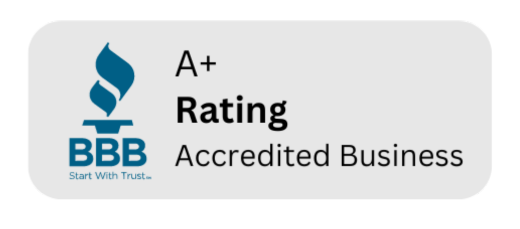



Discover the Versatility and Value of Asphalt Shingles
Asphalt shingles are a popular choice for homeowners in Vancouver, and for good reason. They offer a versatile and cost-effective way to protect your home from the elements while enhancing its curb appeal. With a wide variety of styles, colours, and textures to choose from, asphalt shingles can complement any architectural design, making them a perfect fit for Vancouver’s diverse housing styles.
At Eco Exteriors, we offer asphalt roofing installation and repair services, using only the highest quality materials from trusted brands like Malarkey and CertainTeed. Our team of experienced professionals will guide you through every step of the process, from selecting the perfect shingles to ensuring a flawless installation that protects your home for years to come.
Whether you’re looking for a budget-friendly option for your first home or a premium, designer look for your dream home, asphalt shingles offer the ideal combination of quality, affordability, and longevity for your Vancouver roofing project.
Our Asphalt Roofing Options
Eco Exteriors offers a curated selection of top-quality asphalt shingles to suit your aesthetic preferences, budget, and performance needs. Whether you’re seeking a classic look, enhanced durability, or a premium designer style, we have the perfect shingle for your Vancouver home.

Laminated Architectural Shingles
Laminated architectural shingles, also known as dimensional shingles, are a popular choice for homeowners who want to elevate their home’s curb appeal without sacrificing durability. These shingles are made with a thick base mat and multiple layers of asphalt, creating a dimensional look that mimics the appearance of wood shakes or slate tiles at a fraction of the cost.
With their enhanced thickness and multi-layered construction, laminated architectural shingles offer superior protection against the elements. They’re designed to withstand high winds, heavy rain, and even hail, making them an excellent choice for Vancouver’s unpredictable weather. Plus, they typically come with a longer lifespan than standard 3-tab shingles, ensuring your investment lasts for decades.

Rubberized SBS Shingles
For homeowners in areas prone to hail, strong winds, or other extreme weather events, rubberized SBS (styrene-butadiene-styrene) shingles offer the ultimate impact resistance. These shingles are made with a blend of asphalt and rubber, creating a flexible and durable surface that can withstand even the toughest conditions.
In addition to their exceptional durability, rubberized SBS shingles also provide excellent insulation, helping to keep your home warm in the winter and cool in the summer. This can lead to significant savings on your energy bills and a more comfortable living environment.
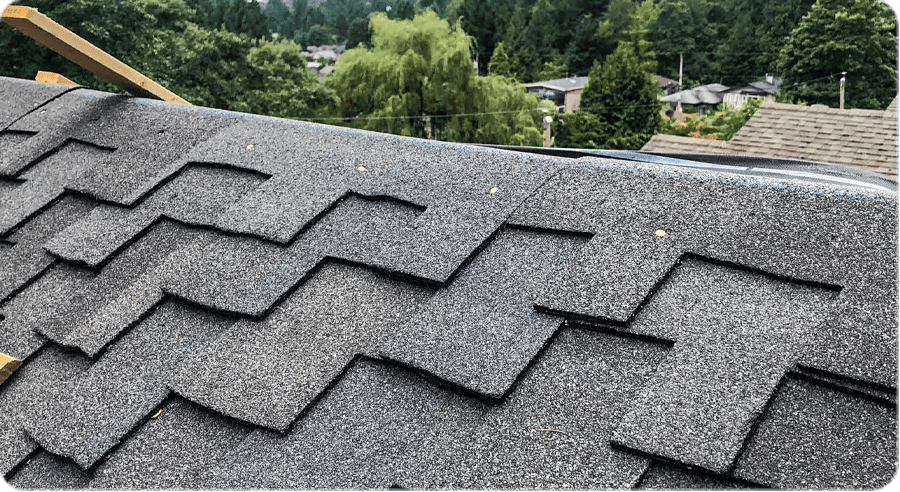
Tri-Lam Roofing Shingles
Tri-Lam shingles offer the best of both worlds: they replicate the thickness and style of wood shake, while also having the benefits of asphalt shingles. These shingles are constructed with three layers of composite material, making them exceptionally strong and resistant to wind and impact damage.
Tri-Lam shingles are also known for their longevity, often lasting 30 years or more with proper maintenance. Their unique design and impressive durability make them a popular choice for homeowners who want a premium look without the high price tag of wood shakes.
Asphalt Shingle Colours: Find Your Perfect Match
Your roof’s colour plays a big role in your home’s curb appeal. Explore our wide range of asphalt shingle colours, from classic neutrals to bold hues, and find the perfect complement to your home’s style.
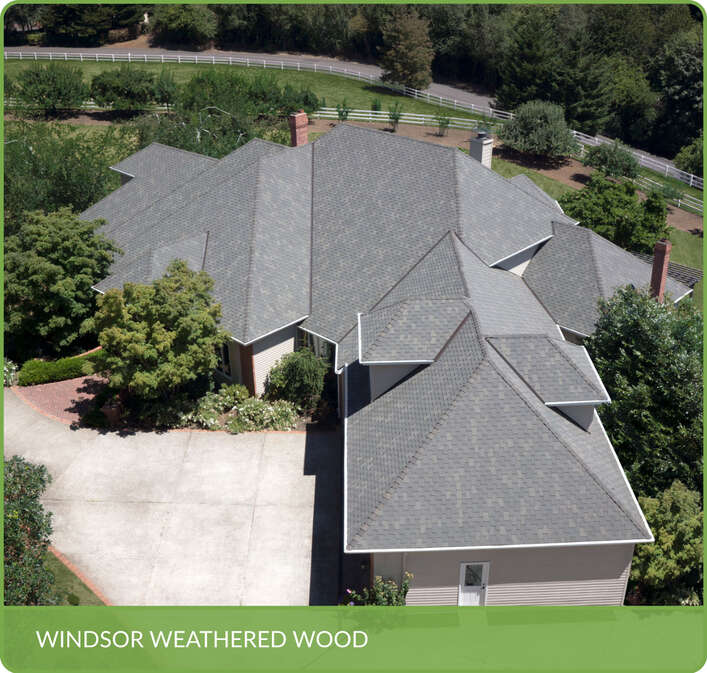
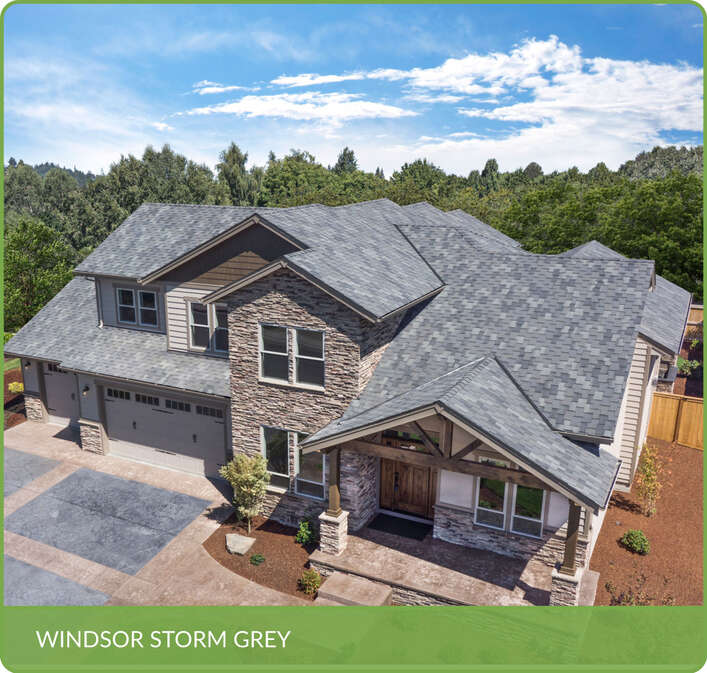
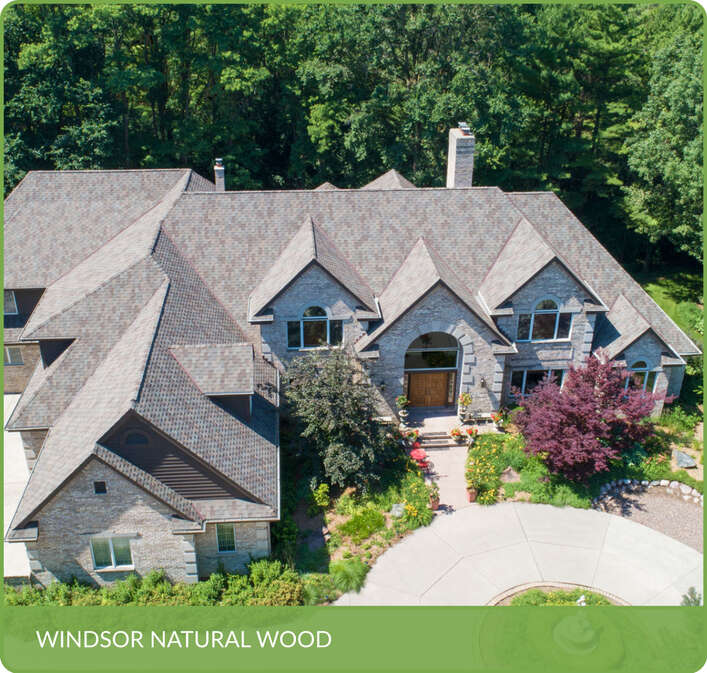
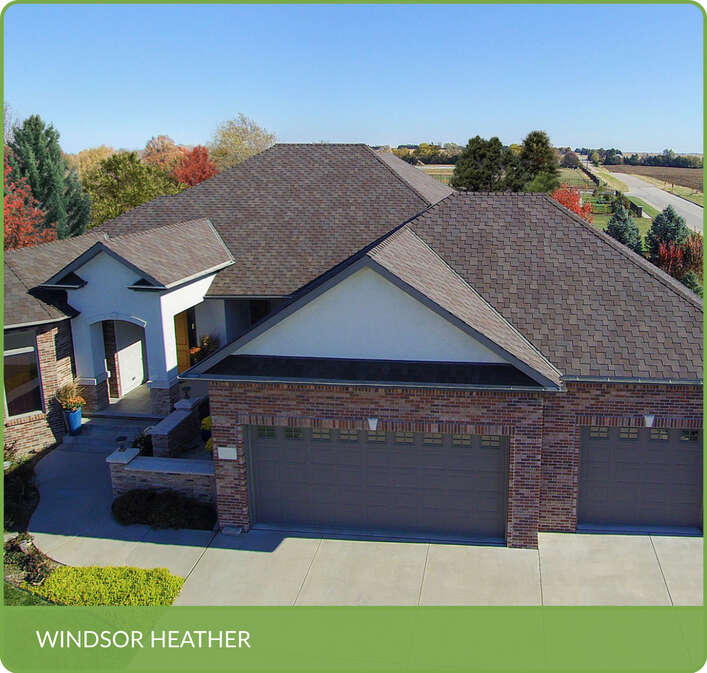
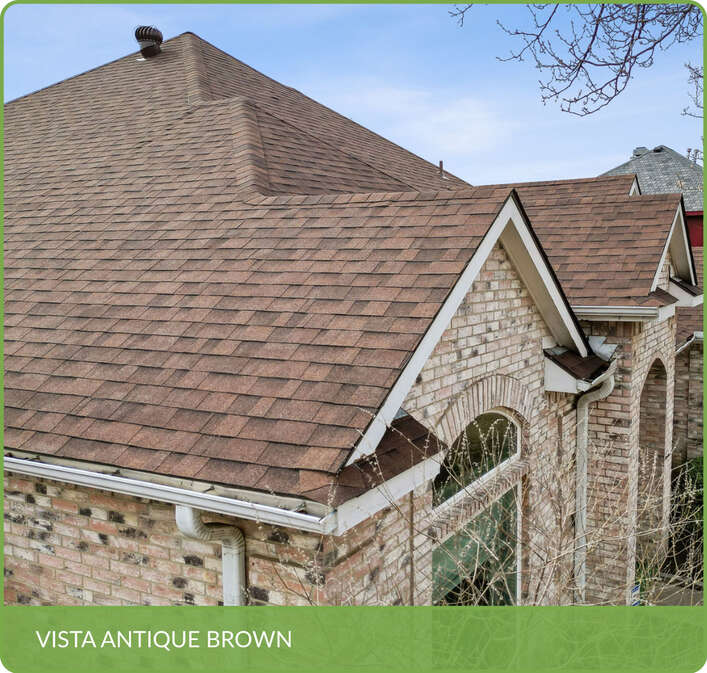
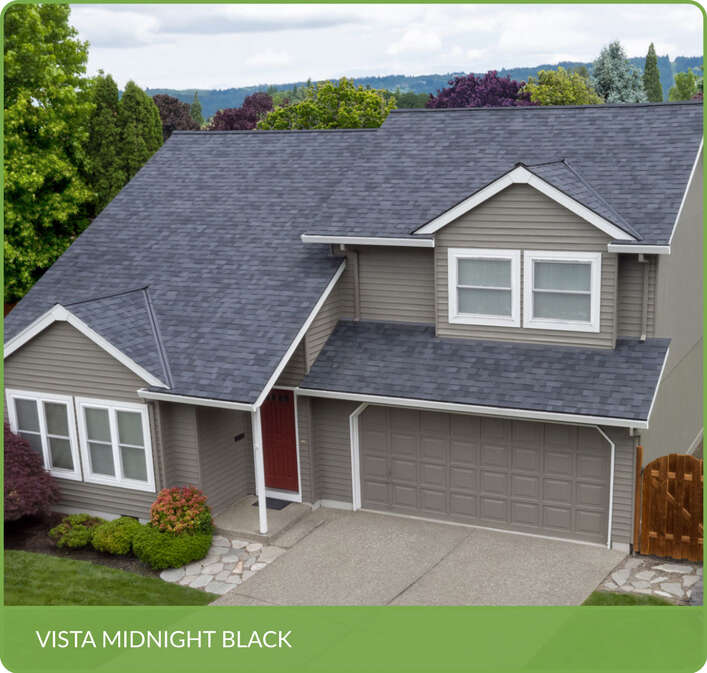
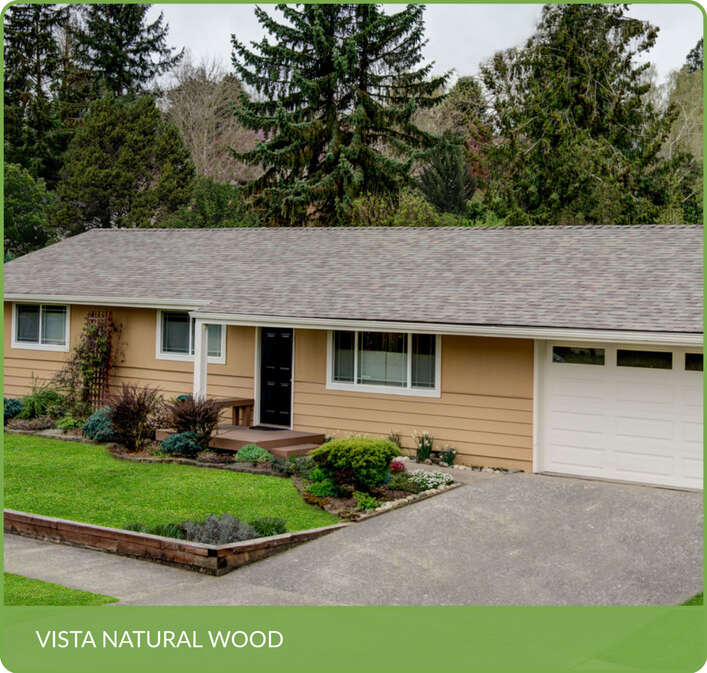
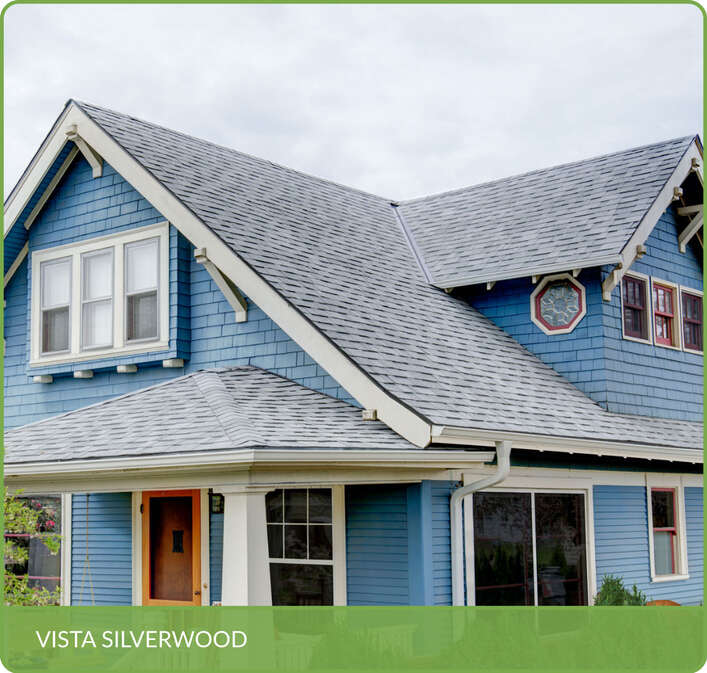





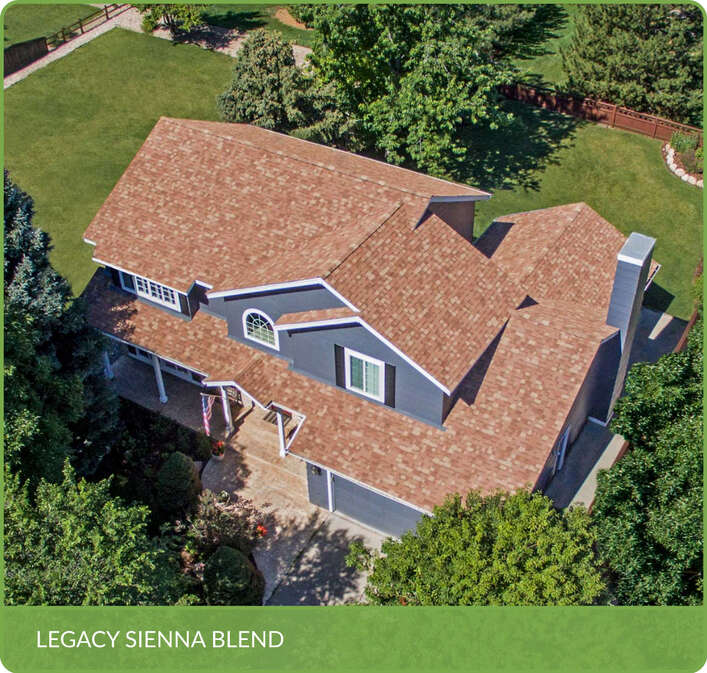
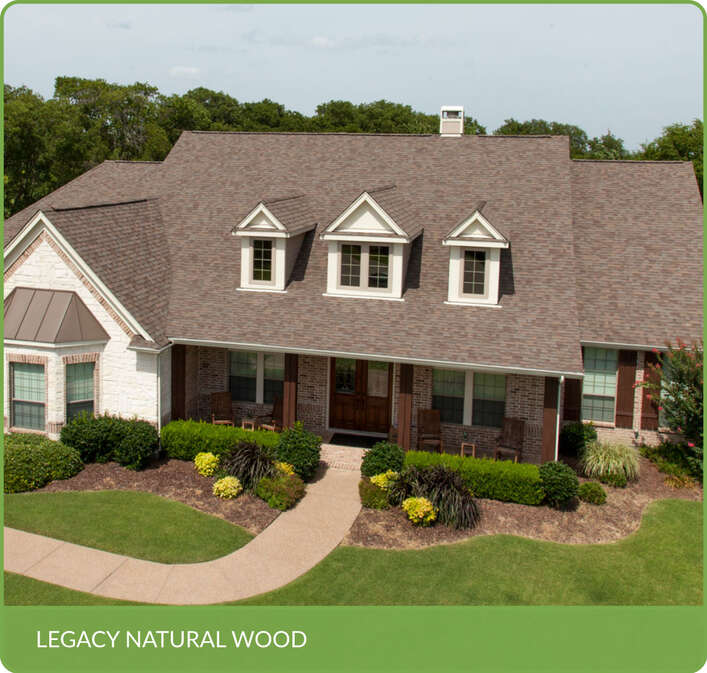
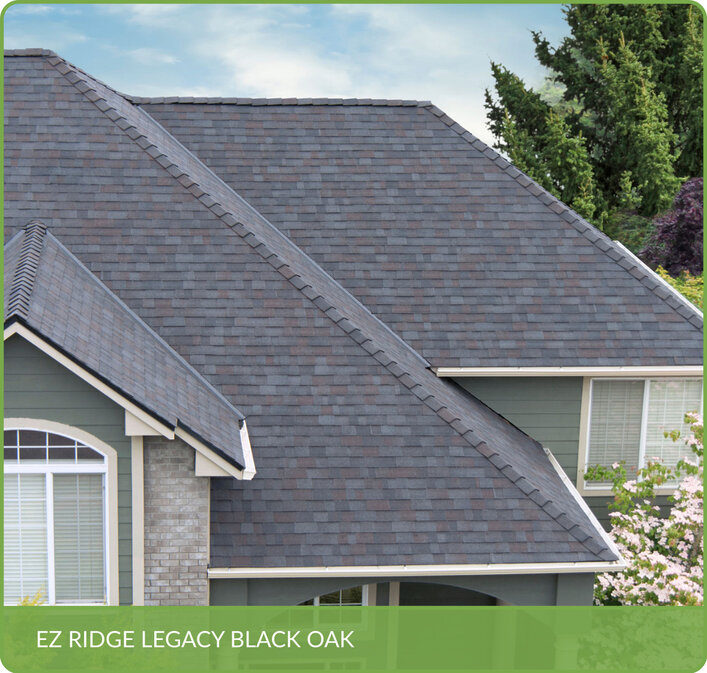
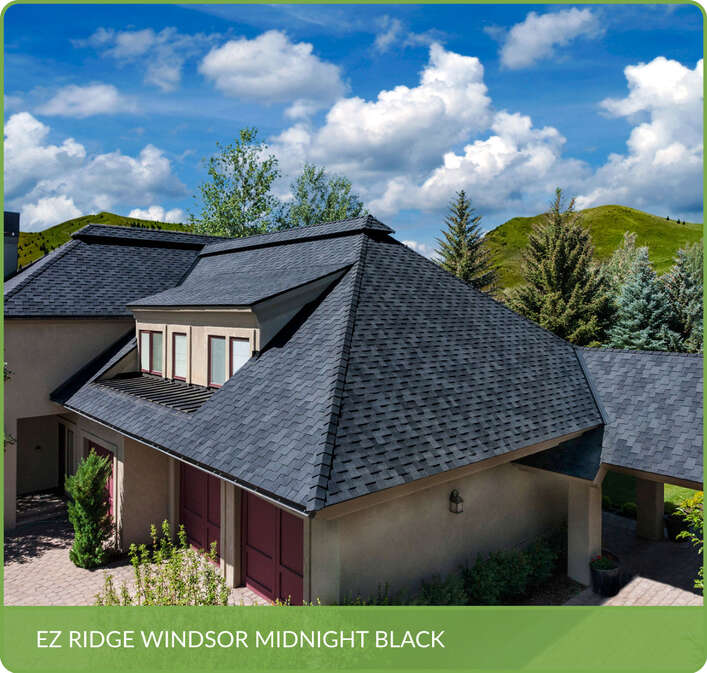
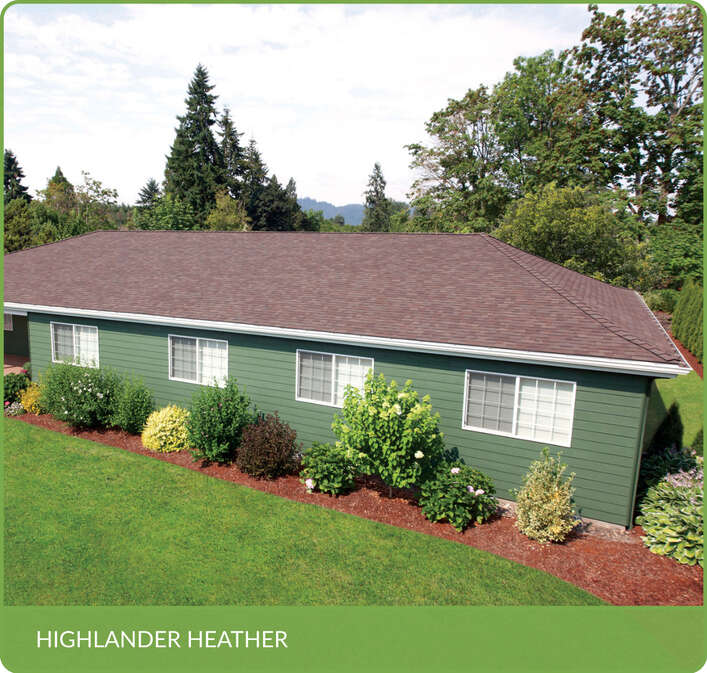

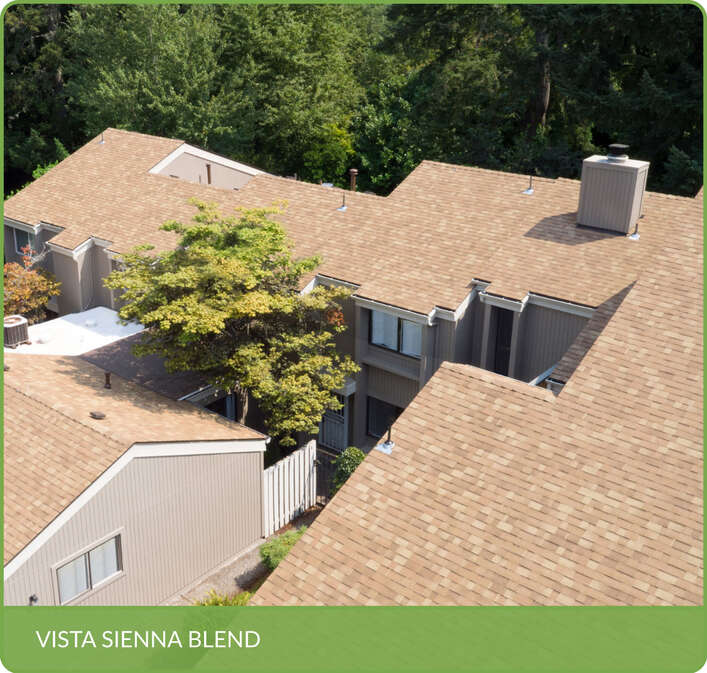
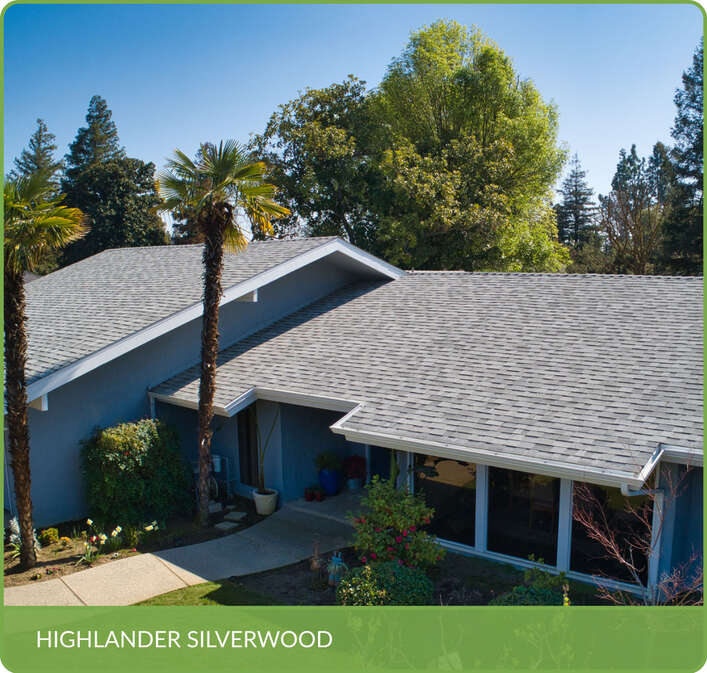
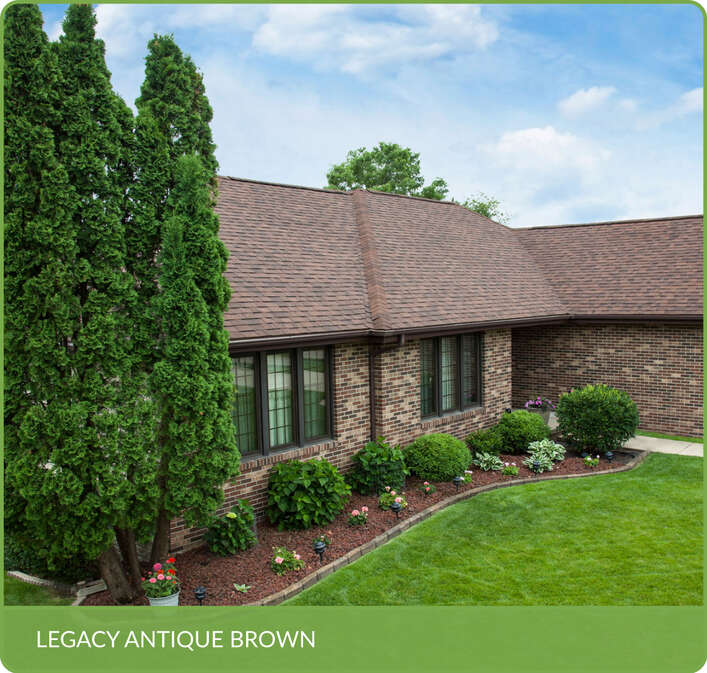
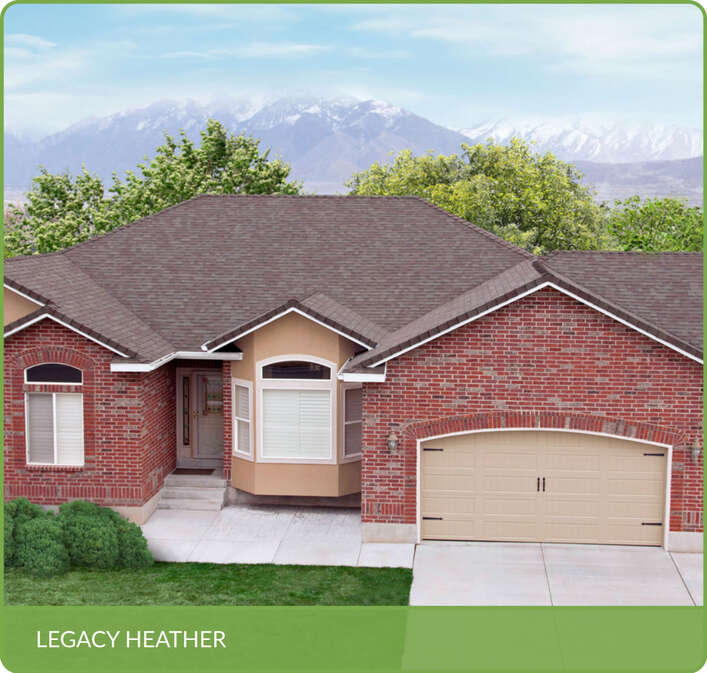
Why Choose Asphalt Shingles for Your Vancouver Home?
Asphalt shingles offer a compelling combination of benefits that make them an ideal roofing solution for Vancouver homeowners. Let’s explore why they might be the perfect choice for your home:
Affordable & Versatile:
Asphalt shingles are a budget-friendly option that comes in a wide variety of styles and colours, ensuring a perfect match for your home's aesthetic.
Durable & Weather-Resistant:
Engineered to withstand Vancouver's rainy climate, asphalt shingles provide reliable protection against the elements, keeping your home safe and dry.
Easy Installation & Repair:
Lightweight and easy to work with, asphalt shingles can be installed quickly and repaired efficiently, minimizing disruption to your daily life.
Noise Reduction:
The multi-layered construction of asphalt shingles provides excellent sound dampening, creating a quieter and more comfortable home environment.
Impact Resistant:
Choose impact-resistant shingles like our Rubberized SBS Shingles for added protection against hail and debris, common in Vancouver's varying weather conditions.
Lightweight & Versatile:
Ideal for a variety of roof structures, asphalt shingles are a practical and adaptable solution for your roofing needs.
Ready to discover the perfect asphalt shingle for your Vancouver home? Contact us today for a free consultation and estimate. We’ll help you explore your options and find the ideal solution to match your style, budget, and needs.
Eco Exteriors Warranty
At Eco Exteriors, we stand behind the quality of our workmanship and the durability of our asphalt roofing systems. Your peace of mind is our priority, which is why we offer a comprehensive warranty package that covers both materials and labor.
Manufacturer Warranties:
As certified installers of Malarkey and CertainTeed products, we provide you with access to the extended warranties offered directly by these reputable manufacturers. This means you’ll benefit from the highest level of protection for your investment, covering both the materials themselves and any potential manufacturing defects.
Workmanship Warranty:
In addition to the manufacturer’s warranty, we offer our own 6-year or 10-year workmanship warranty on all materials and accessories installed by Eco Exteriors. This warranty covers any issues that arise due to faulty installation, giving you an added layer of security and confidence in your new roof.
WorkSafeBC Coverage:
We are fully compliant with WorkSafeBC regulations, ensuring that our team is protected and that you’re not liable for any workplace accidents during your project.
Ready to get started? Contact us today for a free consultation and estimate.
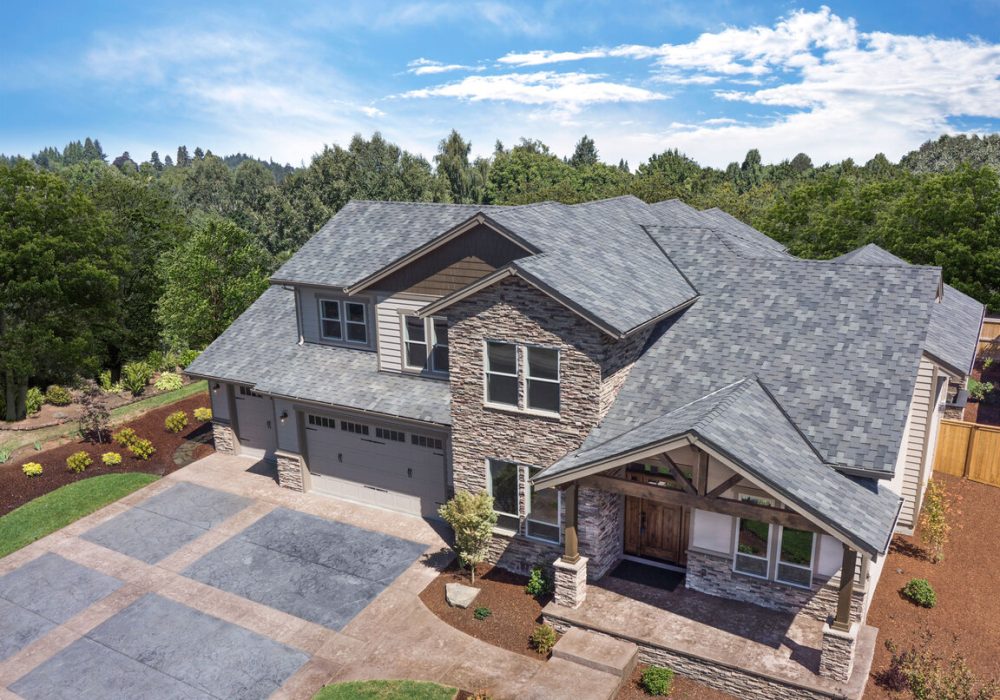
Understanding Asphalt Shingles: Composition and Lifespan
When investing in a new roof, it’s essential to understand the materials that will be protecting your home for years to come. Let’s take a closer look at the composition of asphalt shingles and the factors that influence their lifespan.
What Are Asphalt Shingles Made Of?
Asphalt shingles are a multi-layered composite material, engineered to provide durability, weather resistance, and aesthetic appeal. Here’s a breakdown of the key components:
Base Mat:
The base mat, typically made from fiberglass or organic materials, provides the shingle's underlying strength and stability, helping it resist wind, rain, and other weather-related damage.
Asphalt Coating:
Multiple layers of asphalt are applied to the base mat, creating a waterproof barrier that protects your home from leaks. The quality and thickness of the asphalt coating play a crucial role in the shingle's overall durability and lifespan.
Granules:
These are the colourful mineral granules that you see on the surface of the shingle. They protect the underlying asphalt from the sun's harmful UV rays, provide the shingle's colour and texture, and can enhance fire resistance.
How Long Do Asphalt Shingles Last?
The lifespan of an asphalt shingle roof can vary significantly depending on several factors, including:
- Quality of Materials: High-quality shingles made with premium materials tend to last longer than lower-quality options.
- Installation Quality: Proper installation is crucial for ensuring your roof’s longevity. A poorly installed roof is more susceptible to leaks, blow-offs, and premature wear and tear.
- Climate and Weather: Harsh weather conditions, such as extreme heat, heavy rain, hail, and strong winds, can accelerate the aging process of asphalt shingles.
- Maintenance: Regular inspections and maintenance, such as cleaning debris and repairing minor damage, can extend the life of your roof.
- Ventilation: Proper attic ventilation is essential for preventing moisture buildup, which can lead to mold growth and shingle deterioration.
On average, asphalt shingle roofs last 20-25 years. However, with high-quality materials, professional installation, and proper maintenance, some roofs can last 30 years or more.
Signs Your Asphalt Roof Needs Attention
Your roof is your home’s first line of defence against Vancouver’s ever-changing weather. Even with the most durable asphalt shingles, it’s important to be aware of the signs that your roof might be nearing the end of its lifespan or in need of repair. Early detection and prompt action can prevent minor issues from escalating into major problems, saving you time, money, and headaches down the line.
Here are some key warning signs to watch out for:
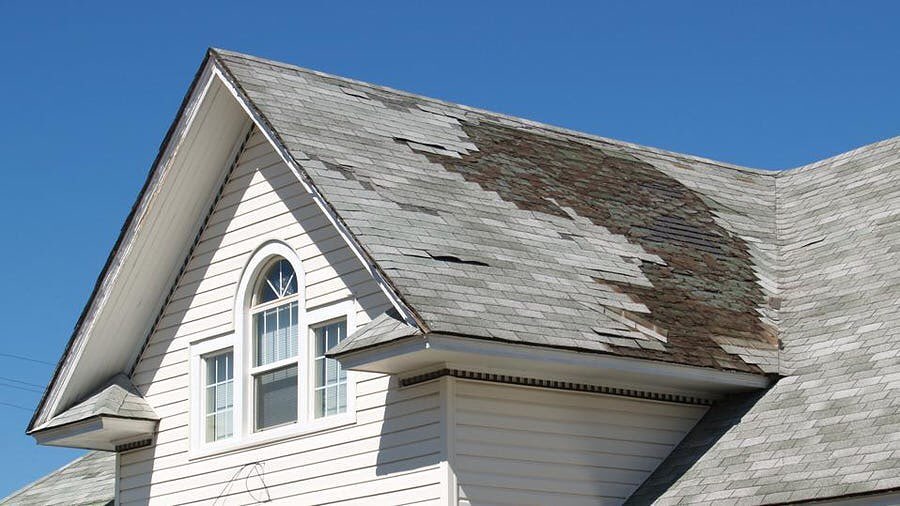
Curling or Buckling Shingles:
If you notice shingles that are curling at the edges, buckling in the middle, or lifting away from the roof, it could be a sign of aging, improper installation, or poor ventilation. Curling shingles can trap moisture and debris, leading to leaks and further damage.
Cracked or Missing Shingles:
Cracks and missing shingles are obvious signs of damage that leave your roof vulnerable to water infiltration. Even small cracks can quickly expand and cause leaks, so it's important to address them promptly.
Granule Loss:
Asphalt shingles are coated with mineral granules that protect the underlying asphalt from the sun's harmful UV rays. If you see excessive granules in your gutters or downspouts, it's a sign that the shingles are wearing down and may need to be replaced.
Leaks and Water Stains:
Water stains on your ceiling or walls, or a damp attic, are clear indicators of a leaky roof. Leaks can cause significant damage to your home's structure and interior, so it's crucial to address them immediately.
Moss or Algae Growth:
While not always a major concern, excessive moss or algae growth can trap moisture and damage your shingles over time. If you notice significant growth, it's a good idea to have it cleaned and treated to prevent further damage.
Age of Your Roof:
Most asphalt shingle roofs last 20-25 years, although some premium options can last longer with proper maintenance. If your roof is nearing or exceeding this lifespan, it's wise to have it inspected by a professional to assess its condition.
If you notice any of these signs, don’t hesitate to contact Eco Exteriors. Our experienced team can conduct a thorough roof inspection, identify any issues, and recommend the most effective solutions to restore your roof’s integrity and protect your home.
FAQ: Your Questions Answered
The cost of an asphalt roof varies depending on several factors, including the size and pitch of your roof, the type of shingle you choose (3-tab, architectural, designer), and any additional features like ventilation or skylights.
However, asphalt shingles are generally one of the most affordable roofing options available, making them an attractive choice for budget-conscious homeowners. To get an accurate estimate for your specific needs, we recommend requesting a free consultation and quote from Eco Exteriors.
The main difference lies in their appearance and construction. 3-tab shingles are single-layered and have a flat appearance, while architectural shingles are multi-layered and have a more dimensional look that mimics the appearance of wood shakes or slate. Architectural shingles also tend to be thicker and more durable than 3-tab shingles, offering greater wind resistance and a longer lifespan.
Choosing the right colour and style of asphalt shingles can enhance your home's curb appeal and complement its architectural style. Consider the following factors:
- Your home's exterior colours: Choose shingle colours that complement your siding, trim, and other exterior elements.
- Your personal taste: Select a style and colour that you love and that will make you happy every time you look at your home.
- The architectural style of your home: Different shingle styles may be more appropriate for certain architectural styles. For example, architectural shingles with a wood shake appearance might be a good choice for a craftsman-style home, while a sleek, modern home might benefit from a more minimalist shingle design.
Our team at Eco Exteriors can help you explore your options and choose the perfect asphalt shingles for your Vancouver home. We offer a wide range of colours and styles, and we're happy to provide expert advice and guidance throughout the selection process.
Maintaining your asphalt roof is crucial for maximizing its lifespan and ensuring optimal performance. Here are some essential tips to keep your roof in top shape:
Regular Inspections: Inspect your roof at least twice a year, preferably in the spring and fall. Look for signs of damage, such as cracked, curled, or missing shingles, as well as any signs of leaks or water damage. Pay close attention to areas around vents, chimneys, and skylights, as these are common entry points for water.
Cleanliness is Key: Keep your roof and gutters free of debris like leaves, branches, and pine needles. This prevents moisture buildup, allows for proper water drainage, and helps prevent ice dams in the winter.
Timely Repairs: Don't delay repairs! Address any damaged or missing shingles promptly to prevent leaks and further damage. Early intervention can save you from costly repairs down the line.
Moss and Algae Control: Vancouver's damp climate can encourage moss and algae growth on roofs. If you notice excessive growth, consider using a roof-safe moss and algae remover or consult a professional for cleaning and treatment.
Proper Ventilation: Ensure your attic is properly ventilated to prevent heat and moisture buildup, which can damage your shingles and shorten their lifespan.
Professional Inspections: Consider scheduling an annual professional roof inspection. A trained eye can catch potential problems early on and recommend preventative measures to keep your roof in top condition.
By following these simple maintenance tips, you can extend the lifespan of your asphalt roof, protect your investment, and ensure your home stays safe and dry for years to come.
Your Asphalt Roof Awaits
Inspired by the possibilities? Ready to give your Vancouver home a fresh look and lasting protection? Eco Exteriors is here to guide you through every step of your asphalt roofing journey.
Contact us today for a free consultation and estimate. Our experienced team will assess your needs, discuss your options, and help you choose the perfect asphalt shingle color and style to complement your home and budget.
With our commitment to quality, craftsmanship, and customer satisfaction, you can trust Eco Exteriors to deliver a beautiful and durable asphalt roof that you’ll love for years to come.




